The world is prominent, but some cities stand out from the rest. Some are small and quaint, while others are bustling with life and adventure. Some cities also make you feel like you’ve been transported to another reality.
Pakistan is a diverse country with a rich history and culture. It is not only known for its natural beauty but also for its contribution to the world of sports. Today, it is one of the countries with the highest population in the world. Thousands of people from around the world visit Pakistan every year to see its beauty as tourists and to stay here and enjoy their lives permanently. Here’s a list of ten of the largest cities in Pakistan.
1. Karachi – 1,460 Square Miles
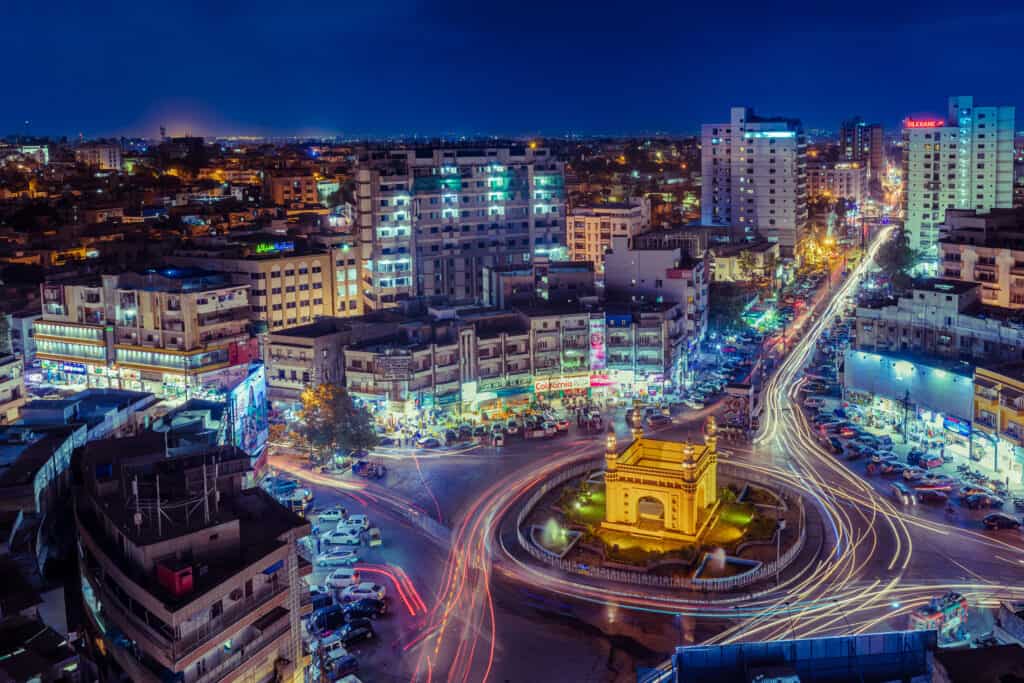
The culture in Karachi is diverse because many different communities live here, including Mohajirs, Sindhis, Punjabis, and Pashtuns.
©ibrar.kunri/Shutterstock.com
Karachi is located on the Arabian Sea coast. It is also called a “city of lights” because of its street lights. Karachi is the country’s principal port and financial center.
Karachi has been Pakistan’s commercial capital since colonial times, and its economy is primarily based on trade and services. According to a 2019 projection, this city’s GDP is approximately $129.7 billion (PPP).
Karachi has become an important financial center in Asia and is the central hub for foreign banks operating in Pakistan. In addition, due to Pakistan’s competitive labor costs and duty-free import regime, many large multinational corporations have established manufacturing bases in the city.
The culture in Karachi is diverse because many different communities live here, including Mohajirs, Sindhis, Punjabis, and Pashtuns.
Many ethnic groups from other parts of Pakistan have migrated to Karachi over time to find work or because they were forced out by violence in their home provinces. Combined with Karachi’s natural beauty, this diversity makes the city a desirable place to visit.
Karachi has become one of Pakistan’s most important transport hubs due to its proximity to the sea. It is home to Bin Qasim Port and Jinnah International Airport.
2. Lahore – 684 Square Miles
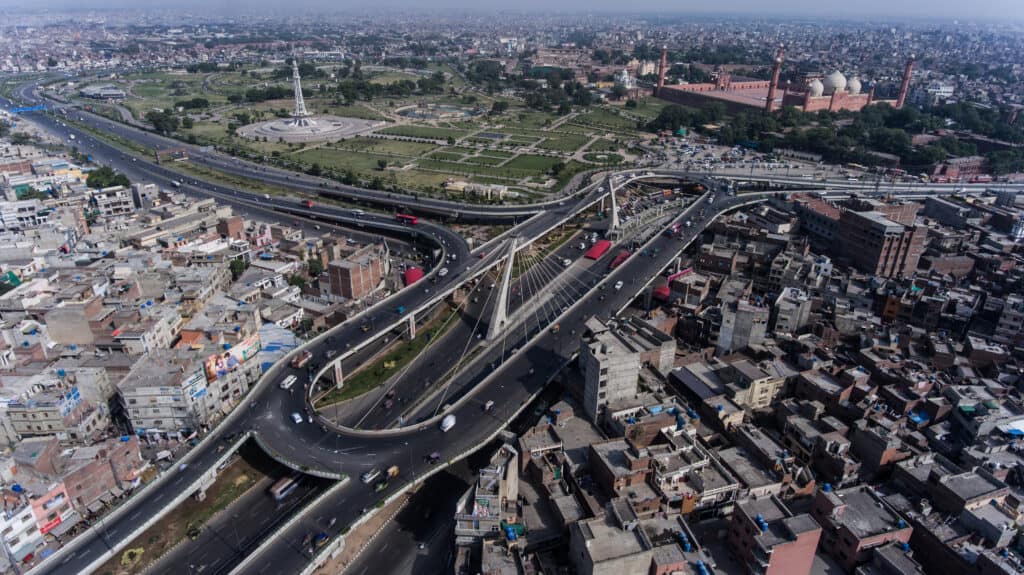
Tourism has been an essential industry in Lahore since its early days due to its rich culture and heritage.
©A M Syed/Shutterstock.com
Pakistan’s second-largest city is Lahore. This city occupies the 26th most prominent position in the world and is the capital of Punjab province. Lahore is known as the “City of Gardens” and the “Heart of Pakistan.”
Lahore contributes majorly to Pakistan’s economy as it’s the wealthiest city in the country. From the 2019 projections, the city had a GDP of $84 billion.
Tourism has been an essential industry in Lahore since its early days due to its rich culture and heritage. The city is home to monuments, museums, and libraries, including Badshahi, Shalimar Gardens, Lahore Fort, Wazir Khan Mosque, and Sikh and Sufi shrines.
Lahore is well-connected by road, rail, and air transport systems. It has an international airport that serves as the central hub for Pakistan International Airlines flights to other countries worldwide. The city also has a large railway station that connects it with other cities across Pakistan and neighboring India.
3. Faisalabad – 512 Square Miles
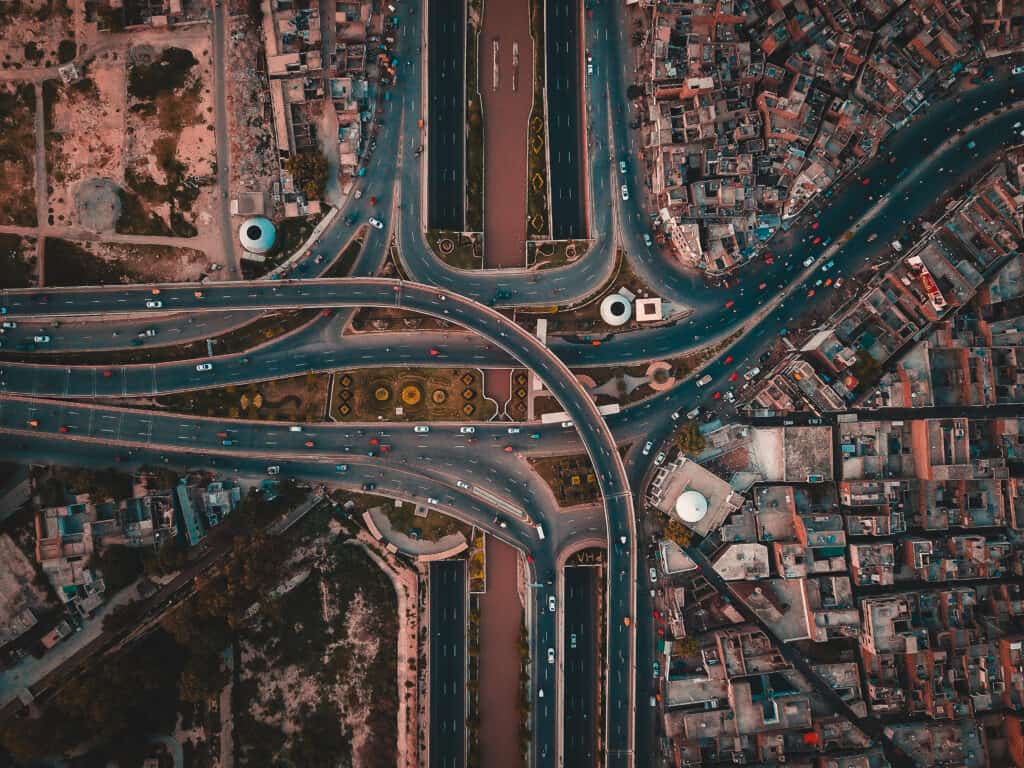
Faisalabad has become one of Asia’s fastest-growing cities thanks to these industries, contributing significantly to Pakistan’s overall GDP of $20.5 billion annually.
©Noman Ilahi/Shutterstock.com
Faisalabad is a major industrial center and the central hub of Pakistan’s textile industry.
Faisalabad is also known as a “Textile City” or “Industrial City.” This is because it has a strong economy that largely depends on agriculture. But it has grown into an industrial hub as well. Various industries thrive in the city, including textiles, sugar, paper, and cement production.
Faisalabad has become one of Asia’s fastest-growing cities thanks to these industries, contributing significantly to Pakistan’s overall GDP of $20.5 billion annually.
By 2025, the city’s GDP (PPP) is expected to reach $87 billion, up from $43 billion in 2013.
Faisalabad has a rich culture that is based on its people. They include Muhajirs (Muslims who migrated from India), Punjabis, and Pashtuns.
Faisalabad’s culture has been influenced by these ethnic groups and their traditions, customs, and languages.
Through railways and road network systems, Faisalabad is well connected with other cities like Karachi, Islamabad, and Lahore. Bus services are available.
Education is considered one of the most critical aspects in Faisalabad because it plays a vital role in building a country’s economy. There are many educational institutes in Faisalabad that provide quality education. They include Government College University (GCU), National Textile University (NTU), and National College of Arts (NCA)
4. Rawalpindi – 185 Square Miles

Rawalpindi has a well-established economy, with agriculture being its primary source of income.
©Shamsher Ali Khan Niazi/Shutterstock.com
Rawalpindi is one of the fourth largest cities in Pakistan. It is the administrative center of Rawalpindi District and Rawalpindi Division. It is located on the Pothohar Plateau and is known as “the garden city” and “City of Saints.”
The city serves as an administrative headquarters to the Inter-Services Intelligence (ISI), Pakistan Army’s Second Artillery Corps (SAAR), Strategic Force Command (SFC), and Fourth Armies.
Historical religious landmarks in Rawalpindi include the Benazir Bhutto International Airport, built in 1936, and the tomb of Hazrat Lal Hussain Baba, a Sufi saint from Baghdad who migrated to India in the 10th century. He established his spiritual center here, which became a place of pilgrimage for Muslims from all over South Asia.
The city has been a multicultural melting pot throughout history, with people from various religions living together in peace. This has led to a unique culture that blends elements of Eastern and Western cultures, with many local traditions being preserved through art and architecture.
Rawalpindi has a well-established economy, with agriculture being its primary source of income. It also attracts tourists from all over Pakistan due to its proximity to Islamabad and Kashmir.
5. Hyderabad – 113 Square Miles
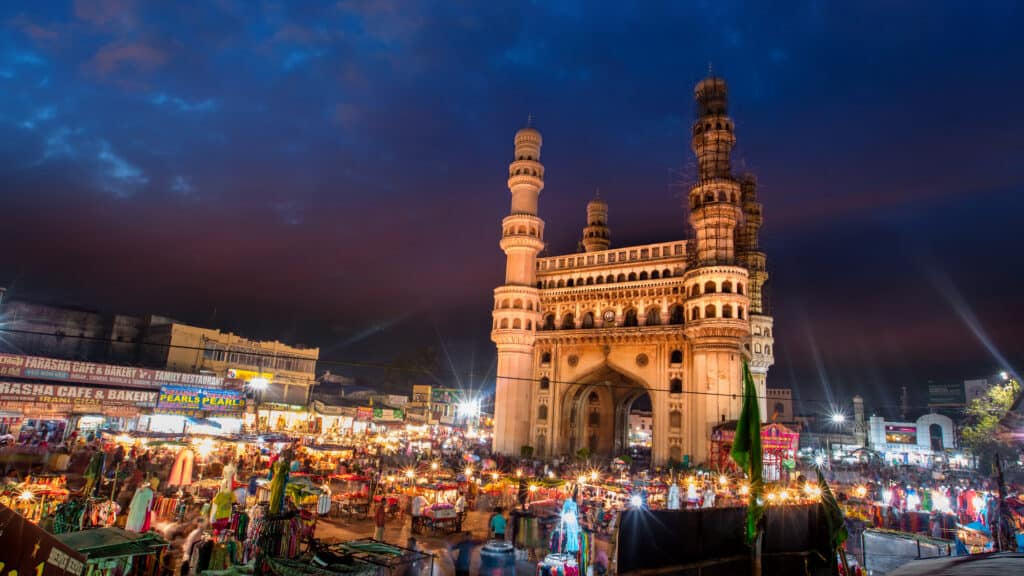
Hyderabad is famous for its traditional arts and crafts, including woodcarving, silverwork, lacquer, and stone polishing.
©SNEHIT PHOTO/Shutterstock.com
Hyderabad is a major urban, commercial, and industrial center of Pakistan.
The city stands along the Indus River in the northwestern part of Sindh.
Hyderabad’s economy has historically been based on agriculture, but it has changed dramatically over time. The city has also seen rapid growth in other industries in recent years. The city’s economy is based on commerce, textiles, pharmaceuticals, and sugar production. Hyderabad is Pakistan’s largest producer of pharmaceutical products.
Hyderabad has a rich cultural heritage. The city is famous for its traditional arts and crafts, including woodcarving, silverwork, lacquer, and stone polishing.
It is also known for its rich musical culture, which is based on Sufi poetry.
6. Gujranwala – 90 Square Miles
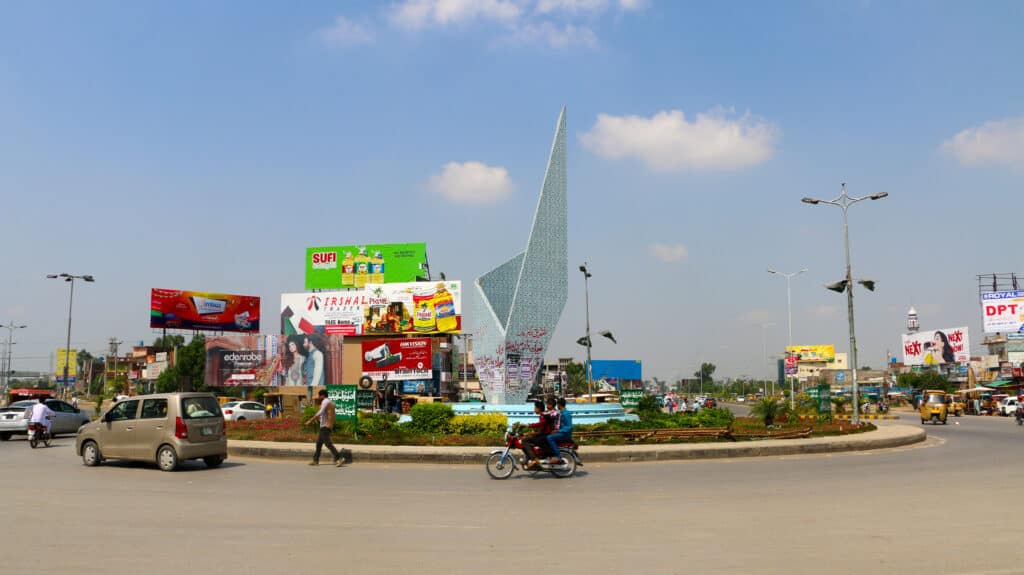
The economy of Gujranwala is mainly based on industry, agriculture, and trade due to its location on GT Road.
©Jahanzaib Naiyyer/Shutterstock.com
This city is located in the Punjab Province of Pakistan. Gujranwala is the district headquarters and the central city of Gujranwala District. The town is about 93 miles from Lahore, 37 miles from Sialkot, 37 miles from Jhelum, and 19 miles from Mandi Bahauddin on the Grand Trunk Road.
The economy of Gujranwala is mainly based on industry, agriculture, and trade due to its location on GT Road (the old name for National Highway N-5). In terms of GDP, this industrial center contributes between 5% and 9% to Pakistan’s GDP.
Gujranwala has a rich cultural heritage that can be traced back to the era before independence from British rule. The city has many monuments and mosques built during that period. It also has some modern art galleries where local artists display their work for public viewing.
7. Multan – 88 Square Miles

Multan’s economy is based on agriculture, especially cotton and rice farming.
©suronin/Shutterstock.com
Multan is located along the Chenab River, which separates Pakistan from India. Multan was once known as Mooltan, meaning “Land of Forts.” The city was founded by Chaudhry Lodi, the chief of the Patta Patti clan.
The city is surrounded by a wall built in the 16th century. It is about 1.2 miles long and 20 feet high. The wall has four gates: Subhanpur, Jauhar, Bhutta, and Hyderabad.
Multan has grown into a major industrial center for southern Punjab, with largescale manufacturing industries producing textiles, sports goods, surgical instruments, hosiery, and flour mills. It is also an important educational center for southern Punjab.
Multan’s economy is based on agriculture, especially cotton and rice farming. In addition, many small-scale industries like textiles, pharmaceuticals, and food processing units are located around the city.
8. Peshawar – 83 Square Miles
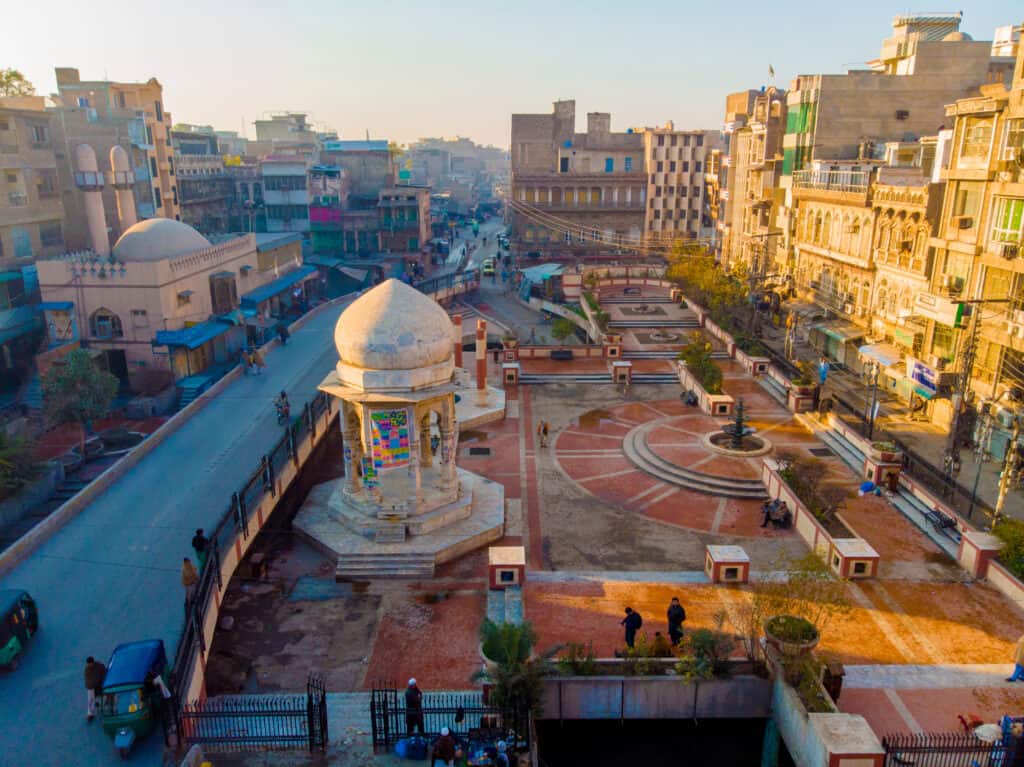
Peshawar is home to many artists, musicians, poets, and writers who have contributed significantly to its cultural richness.
©Doulat Khan/Shutterstock.com
Peshawar is one of the most ethnically and linguistically diverse cities in Pakistan, which means its residents come from all over the country and abroad.
Peshawar is home to many artists, musicians, poets, and writers who have contributed significantly to its cultural richness. In addition, the city’s heritage is reflected in several ancient sites, including Mohabbat Khan’s Tomb and Shahi Bridge.
Peshawar is one of Pakistan’s most prominent industrial centers and has many industries, including textiles, leather goods, and sports goods.
Tourism is also a large part of the economy as people come to see places like the Khewra Salt Mines and Nathiagali Youth Hostel, which offers tourists an opportunity to see snow leopards in their natural habitat.
9. Islamabad – 80 Square Miles
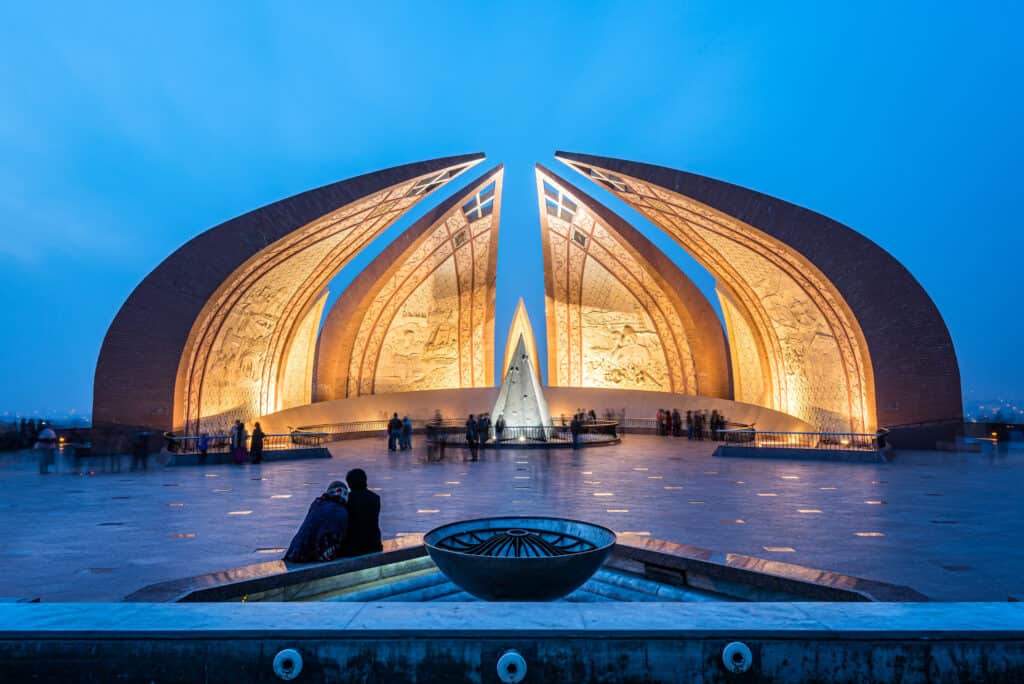
The Pakistan Monument is a landmark in Islamabad, representing four Pakistan provinces.
©SAKhanPhotography/Shutterstock.com
Pakistan’s capital, Islamabad, was designed by American architect Edward Durell Stone, who also designed Washington, DC.
Islamabad is known for its culture and tourist attractions, including museums, parks, gardens, and wildlife sanctuaries.
The most popular attraction in Islamabad is Margalla Hills National Park, which offers visitors a fantastic view of Rawalpindi/Islamabad city from above, some great hiking trails, and picnic spots.
Other popular parks include Shakarparian Hills Park, Chhota Cheel Park, and Lal Haveli Park.
Islamabad’s diverse economy includes agriculture, manufacturing, construction, and service sectors. In addition, the city is home to numerous multinational corporations and public institutions, including Pakistan’s largest private-sector employer, Pakistan International Airlines (PIA).
10. Quetta – 68.7 Square Miles

Quetta’s economy is based on trade and commerce, although other industries, such as manufacturing and mining, exist.
©JIMI RAJA/Shutterstock.com
Quetta City, the capital of Balochistan province, is located in northwest Pakistan. It is a natural fortification and was initially known as the “Key of India.”
The city has played a central role in many historical events since its inception. It has been ruled by several different dynasties, including the Afghans, Sikhs, Mughals, and British Raj.
Quetta’s economy is based on trade and commerce, although other industries, such as manufacturing and mining, exist. The city’s chief exports include fruits, vegetables, textiles, leather goods, and marble products.
Quetta has several theaters, museums, and art galleries that showcase local talent and international artists. Among these are Quetta Arts Council, Balochistan Museum, Museum of Frontier Corps, College Art Gallery, and Sindh-Punjab Arts Gallery.
Summary of the 10 Largest Cities in Pakistan
| Rank | City | Square Miles |
|---|---|---|
| 1 | Karachi | 1,460 Square Miles |
| 2 | Lahore | 684 Square Miles |
| 3 | Faisalabad | 512 Square Miles |
| 4 | Rawalpindi | 185 Square Miles |
| 5 | Hyderabad | 113 Square Miles |
| 6 | Gujranwala | 90 Square Miles |
| 7 | Multan | 88 Square Miles |
| 8 | Peshawar | 83 Square Miles |
| 9 | Islamabad | 80 Square Miles |
| 10 | Quetta | 68.7 Square Miles |
The photo featured at the top of this post is © SNEHIT PHOTO/Shutterstock.com
Sources
- C40, Available here: https://www.c40.org/cities/karachi/
- Geo Names, Available here: https://www.geonames.org/PK/largest-cities-in-pakistan.html
- World Atlas, Available here: https://www.worldatlas.com/articles/biggest-cities-in-pakistan.html
Thank you for reading! Have some feedback for us? Contact the AZ Animals editorial team.






